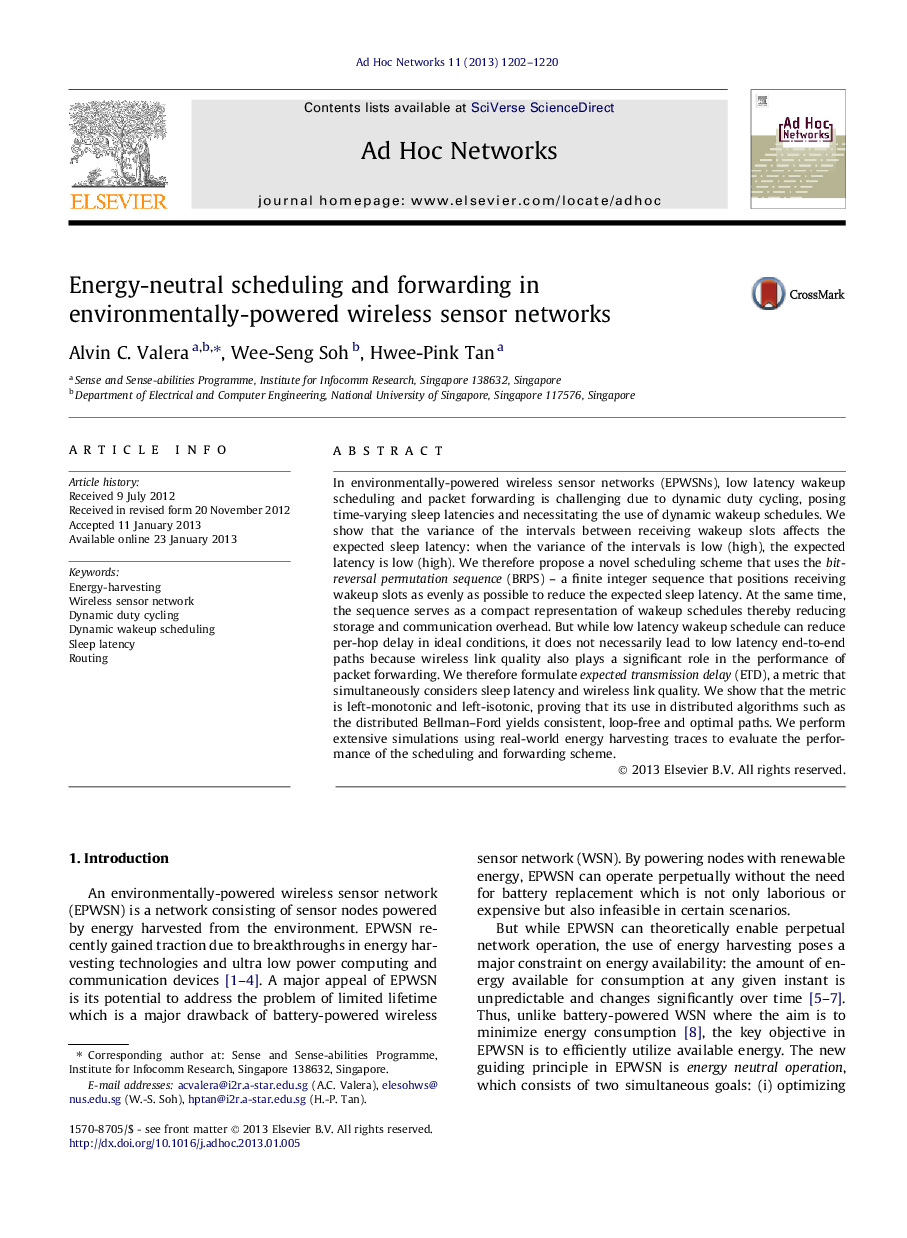| Article ID | Journal | Published Year | Pages | File Type |
|---|---|---|---|---|
| 10338061 | Ad Hoc Networks | 2013 | 19 Pages |
Abstract
In environmentally-powered wireless sensor networks (EPWSNs), low latency wakeup scheduling and packet forwarding is challenging due to dynamic duty cycling, posing time-varying sleep latencies and necessitating the use of dynamic wakeup schedules. We show that the variance of the intervals between receiving wakeup slots affects the expected sleep latency: when the variance of the intervals is low (high), the expected latency is low (high). We therefore propose a novel scheduling scheme that uses the bit-reversal permutation sequence (BRPS) - a finite integer sequence that positions receiving wakeup slots as evenly as possible to reduce the expected sleep latency. At the same time, the sequence serves as a compact representation of wakeup schedules thereby reducing storage and communication overhead. But while low latency wakeup schedule can reduce per-hop delay in ideal conditions, it does not necessarily lead to low latency end-to-end paths because wireless link quality also plays a significant role in the performance of packet forwarding. We therefore formulate expected transmission delay (ETD), a metric that simultaneously considers sleep latency and wireless link quality. We show that the metric is left-monotonic and left-isotonic, proving that its use in distributed algorithms such as the distributed Bellman-Ford yields consistent, loop-free and optimal paths. We perform extensive simulations using real-world energy harvesting traces to evaluate the performance of the scheduling and forwarding scheme.
Related Topics
Physical Sciences and Engineering
Computer Science
Computer Networks and Communications
Authors
Alvin C. Valera, Wee-Seng Soh, Hwee-Pink Tan,
